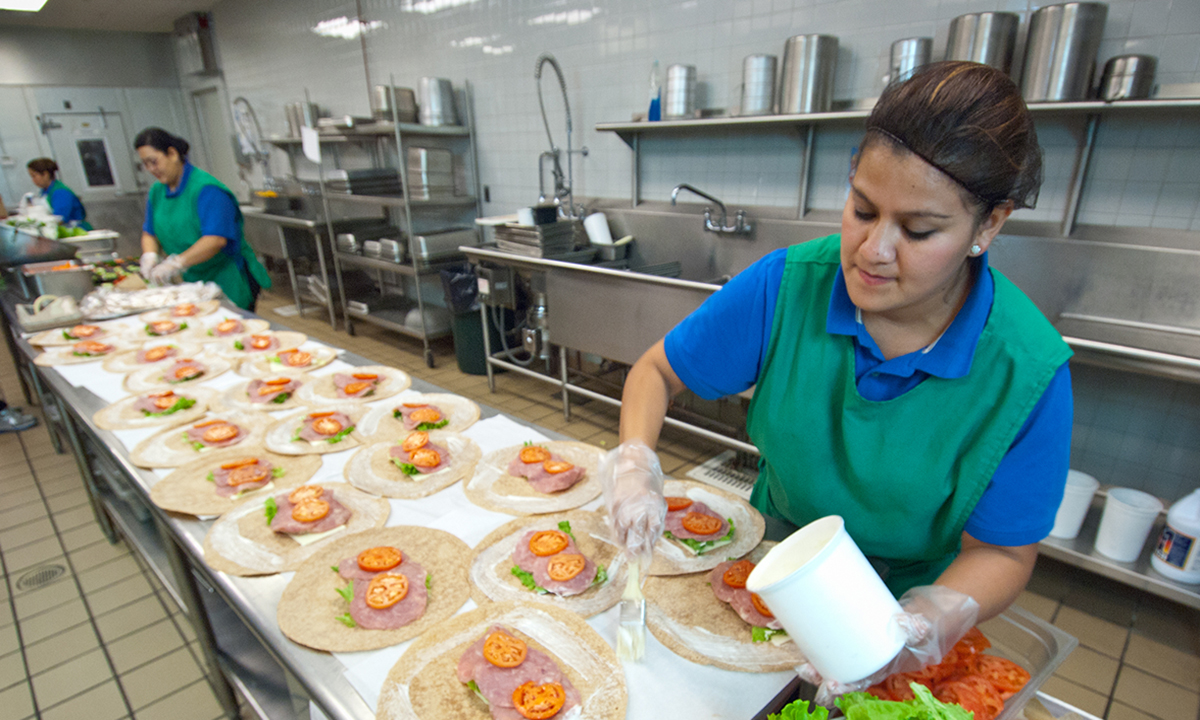Oregon Moves Toward Offering Universal School Meals
A state House bill to provide a pot of money to feed all of Oregon’s K-12 students two meals a day is in flux amid federal changes

Get stories like this delivered straight to your inbox. Sign up for The 74 Newsletter
Schools nationwide received federal COVID-19 relief money to provide free breakfast and lunch to all students at the height of the pandemic. But those funds expired in the summer of 2022 when Congress failed to extend school meal waivers.
Now, individual states are figuring out how to move forward.
Oregon has taken a few steps forward and a few steps back this legislative session when it comes to plans to feed the state’s 550,000 students.
House Bill 3030 would have created a permanent pot of money for universal school meals but it was reduced to a task force before its first hearing, with lawmakers claiming not all schools could scale up that quickly.
Rep. Courtney Neron, D-Wilsonville, who chairs the House education committee and is one of the bill’s seven chief sponsors, said it was difficult to curtail the proposal.
“We understand how critical it is for all children to have adequate nutrition, and we want to make that (happen) as soon as possible,” she told the House committee earlier this month.
As it stands, the bill calls for a recommendation by the task force by September 2024 of how to implement universal meals statewide. It is scheduled for a committee vote on Wednesday. The Oregon Department of Education estimates it would cost between $145 million to $377 million to do so in the 2023-25 biennium.
Meanwhile, the U.S. Department of Agriculture last week announced a new proposal that could significantly increase the number of Oregon schools that qualify for federal reimbursements for meals.
Importance of meals
The Oregon Food Bank estimates more than 114,000 children in Oregon live in households that struggle to afford food. Having access to enough nutritious food can have a big impact on a child’s ability to socialize, focus on their studies and perform academically.
“Decades of research shows that students who eat breakfast and lunch at school do better,” said Matt Newell-Ching, senior policy manager for the Oregon Food Bank, when testifying to state lawmakers on March 15. “It’s kind of odd that we treat school meals differently than we treat other key educational elements within the school environment.”
Oregon has been a leader among states when it comes to food access in schools, and in recent years, it’s doubled the number of students who get it.
In the past, about 25% of Oregon schools provided free breakfast and lunch to all students. They did so because they qualified for federal assistance. Now 55% do, thanks to the passage of the state’s Student Success Act in 2019, which is partly dedicated money for meals.
In some cases, entire districts feed students. Salem-Keizer Public Schools – the second largest district in Oregon with more than 40,300 students – is the largest district in the state to offer universal meals.
About 84% of Salem-Keizer students are considered to be economically disadvantaged. But proponents of these programs say helping all students reduces the stigma around hunger and poverty.
Other states
Some states – Colorado, California and Maine – have permanent, universal school meal programs. And at least 21 states are drafting similar legislation this session, including Minnesota lawmakers, who advanced their bill through the state Senate the day before Oregon’s first hearing for House Bill 3030.
Additionally, starting in the 2023-24 school year, Oregon students participating in Medicaid will automatically qualify for free or reduced-price school meals.
But what Oregon lawmakers and advocates are paying the most attention to is the U.S Department of Agriculture’s new proposal, released last week, which would expand the number of schools that are eligible to get federally reimbursed for providing meals via the Community Eligibility Provision, also known as CEP.
The provision allows the nation’s highest-poverty schools and districts to serve breakfast and lunch at no cost to all enrolled students without needing applications. Schools are reimbursed using a formula based on the percentage of students eligible for free meals because of their participation in other benefit programs, such as the Supplemental Nutrition Assistance Program, or SNAP.
The U.S. Department of Agriculture recently announced several actions to expand support for and access to school meal programs, including awarding $10 million in grants for schools to expand nutrition education and a proposed rule that would lower the threshold for schools to gain access to federal funding.
Advocates say these changes could allow hundreds more schools in Oregon to provide universal meals, but the state will still need to pay more to cover the gap between what the districts, state and federal governments each contribute.
Proponents such as the Oregon Food Bank are support an omnibus spending bill, House Bill 5014, to allocate more money from the state’s general fund to the Oregon Department of Education to help cover these costs and incentivize schools to take advantage of the new offerings.
House Bill 5014 had a public hearing last Thursday before the joint subcommittee on education. It is not yet scheduled for a work session.
“I have lots of optimism that there is momentum growing for universal school meals in Oregon,” Newell-Ching told the Capital Chronicle. “It’s no longer a question of if we’ll get there, but (when).”
Oregon Capital Chronicle is part of States Newsroom, a network of news bureaus supported by grants and a coalition of donors as a 501c(3) public charity. Oregon Capital Chronicle maintains editorial independence. Contact Editor Lynne Terry for questions: info@oregoncapitalchronicle.com. Follow Oregon Capital Chronicle on Facebook and Twitter.
Get stories like these delivered straight to your inbox. Sign up for The 74 Newsletter

;)